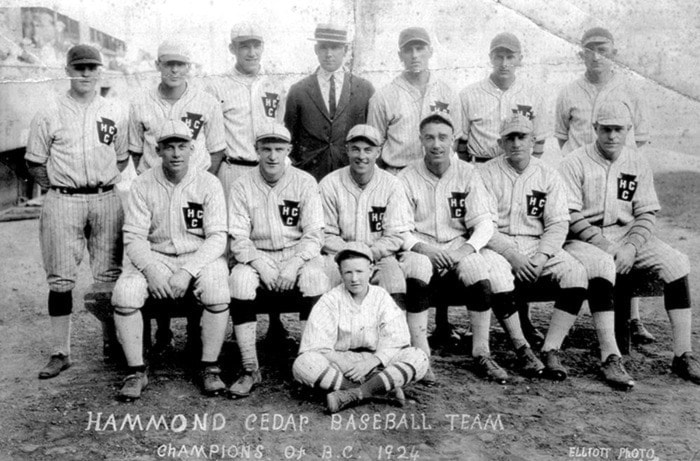In 1914, Richard Hartnell and his son Doan, two lumbermen from Michigan, took over a bankrupt and abandoned sawmill in Port Hammond during a financial depression and made it the largest red cedar mill in the British Empire.
Under their management, from 1914 until 1946, the Hammond Cedar mill provided work and prosperity to the community.
Today the mill, now the world’s largest western red cedar manufacturer, is still an integral part of the community.
Born in England, Richard Hartnell came to Canada in 1871 with his parents and siblings at the age of 13.
There were 10 children in the family. After eight years in Ontario, the entire family, including Richard and his Canadian-born wife, Eleanor, moved to Michigan. That is where Doan Maroni Hartnell, their son, was born, in 1881.
Around that time, Richard and one of his brothers started running a lumber mill.
When brick making began in Clayburn in 1905, Richard and two of his brothers moved from Michigan to British Columbia and started the Maple Grove Lumber Mill south of the brick plant. The following year, Doan joined his father and uncles as bookkeeper of the mill.
The Maple Grove Lumber Mill provided slab-wood for the kilns, ties for the rail tracks and building material for the brick plant and the houses in the new village.
In 1912, the mill burned down and was not revived, because the timber resources in the area were almost depleted and the brick plant started burning coal instead of wood for the production of higher-grade types of` bricks.
Now the Hartnells turned their attention to Port Hammond.
The first mention of a sawmill at Port Hammond is found in the Fraser Valley Record of 1908. The newspaper reports that the mill of the Port Hammond Lumber Company produced mainly lumber for the “immediate vicinity.” This mill was located “about three fourths of a mile back of Hammond.”
In November 1908, J.A. Bailey, at that time the owner of the mill, reportedly exchanged the old machinery for machinery “of a different type.” He also moved the plant to a site along the Fraser River. It was all for nothing.
One year later, his creditors moved in and he was forced to sell.
In 1911, George Boulton resurrected the mill. Keeping the name Port Hammond Lumber Company, he purchased some new machinery and started operating a fir sawmill.
As Bailey before him, Boulton had great plans for the future of the mill.
But in November 1912, Messrs. Heaps, supplier of the machinery, closed down the company for payment of a debt.
This time the mill stayed closed for even a longer time, since, in 1913, a general financial depression put a halt to Vancouver’s building boom of the preceding years.
In April 1914, Richard and Doan Hartnell took possession of the mill. Their first priority was adding a shingle mill, taking advantage of a healthy demand for red cedar shingles in the United States.
They also put the sawmill back into working condition and used it mainly to fill contracts for spruce needed in Washington State for the building of airplanes.
In that way, the mill managed to survive the lean war years. There was even enough work to hire “strong husky girls” to work in the plant when able workmen were scarce because of the war – a first in Canada.
At the end of the war, the city directories show the names of two companies in Port Hammond: the Hartnell Lumber Co. and the Hammond Cedar Company.
The name Hartnell Lumber Co. disappeared after Richard returned to Michigan for good around 1918, selling his interest in the Port Hammond mill to the partners of the Westminster Mill Co. Ltd. of New Westminster.
The mill continued operating under the name Hammond Cedar Company.
One of the partners of Westminster Mill, Carl Judson Culter, originally from Texas, managed the sales and finances of Hammond Cedar, while Doan Hartnell took care of the operations in Port Hammond.
There was sufficient capital to entirely rebuild the plant and to make it exclusively a cedar mill.
The factory had spread to a surface of some 10 acres.
Also, the work force grew from about 100 in 1922 to 250 in 1924.
Thanks to Richard Hartnell and his son Doan M. Hartnell, the lumber industry had become and would remain the leading feature of Port Hammond.
– By Fred Braches, a local historian who lives in Whonnock.
